
Here is exactly how you should be applying all of your most-used products if you want to get the very best out of them
It’s easy to spend hours deciding between different skincare and makeup products. But did you know the way you apply a product is almost as important as what’s in it when it comes to the final result?
Here is exactly how you should be applying all of your most-used products if you want to get the very best out of them.
We’ve also explained the order in which you should apply your skincare, and makeup below.
 Getty Images/iStockphoto
Getty Images/iStockphoto Layering your skincare in the correct order makes a big difference to how it works, and ultimately how effective each product is. As an example, moisturiser should always be the last step as applying moisturiser creates a barrier, designed to lock in moisture and protect the skin from pollution etc.
If you put moisturiser on before a serum, the serum won’t absorb into the skin as well as it should.
Here is the correct order to apply skincare:
♥︎ Morning skincare routine
FURTHER READING: What is SPF and why is it so important?
♥︎ Night skincare routine
FURTHER READING: Face oil, serum and moisturiser: What’s the difference?
Once you’re happy with the order in which to layer skincare, it helps to know how best to apply the individual products.
Use your fingertips and warm water
If you use a foaming cleanser or a gel, never apply this straight to a cloth because the material will absorb too much of the product.
Instead, apply it to your fingers and rub it on your face this way.
Massaging it into your skin helps you reach all the bits you might miss using a cloth.
Make sure to use warm water, to help open your pores.
If you’re using a cleansing balm, start by rubbing this on DRY skin and massage for about a minute. By putting it on dry skin helps create friction and makes it easier for the cleanser to grab impurities and dirt from your face.
FURTHER READING: The best cleanser
Wipe them across your face
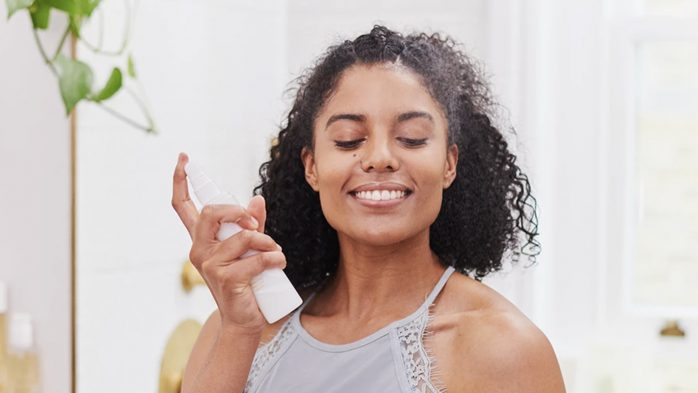 Tropic
Tropic Toners should be applied to clean skin, but since they’re designed to remove residue like chlorines, salts and even parts of makeup your cleanser didn’t get rid of, you should use something to wipe your face with the toner.
A set of reusable cotton pads you can chuck in the washing machine is a great and eco-friendly addition – you can get a pack of 20 from Amazon for £9.99. Or you can use regular cotton pads.
We tend to use a single cotton pad for each half of our face, but you can also use the reverse side of a pad if you’re trying to preserve them.
If your toner comes in a spray bottle, you should still wipe it on first and then mist your face afterwards, to make sure your skin is damp enough for the next stage.
It’s important to use your toner as soon after you have cleansed as possible, even leaving your face for a minute can cause it to start dehydrating.
FURTHER READING: What does toner actually do?
Use sparingly
 The Body Shop
The Body Shop One of the ways people misuse exfoliators is over-using them.
You should apply exfoliators in the same way as cleansers, using your fingers, but only to the areas of your skin that are a particular concern, such as your nose and chin.
The most sensitive parts of your face won’t need exfoliation at all.
If you often have a shiny forehead, this can be a sign you’re overdoing it with exfoliators.
FURTHER READING: Best face exfoliator
Apply to damp skin
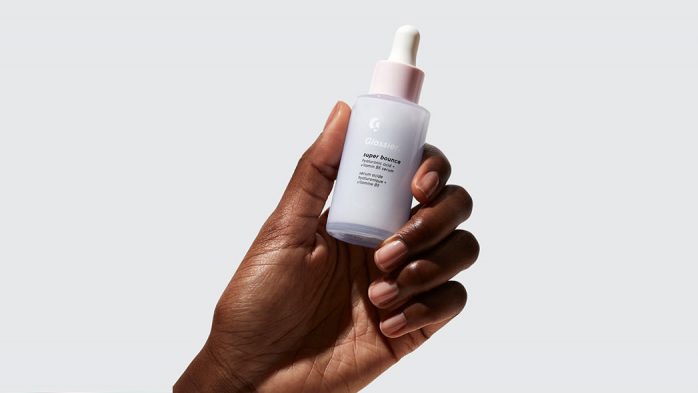 Glossier
Glossier Serums and acids should be applied when your face is slightly damp.
While this might sound odd, damp skin is 10 times more permeable than dry skin, so this simple change will make a big difference.
READ NEXT: Best face serums
The ideal time to apply a serum or an acid is straight after you have cleansed and toned, because it will be able to absorb more of the active ingredients.
FURTHER READING: The truth about the acids in your skincare
On your palm first
 The Ordinary
The Ordinary Instead of applying face oil directly to your face, as you may see in countless Instagram and YouTube videos of influencers, skincare experts advise you squeeze face oil onto the palm of your hand first.
This helps to make sure you apply an even amount across your face, rather than it just concentrating on the places it has landed.
FURTHER READING: Skin serum, facial oil or moisturiser: Which one do you need?
Apply to slightly damp skin
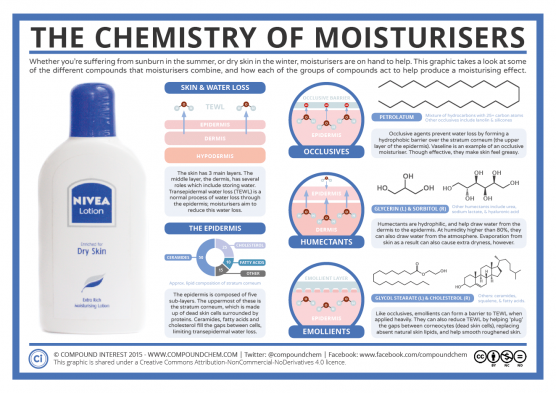 Compound Chemistry
Compound Chemistry “Moisturisers affect the dead layer of skin in the stratum corneum, the outer layer of the skin,” cosmetic chemist Perry Romanowski told mamabella.
“Moisturisers do not have much impact on the living skin cells in the dermis. Cells in the epidermis are not living but moisturisers do two main things.
“Firstly, they attract and bind water in the epidermis, which makes the skin more flexible and makes it feel better. Secondly, moisturisers also add emollients to skin which makes it directly feel and look better.”
This means, if there is more water on the epidermis to start with before you put your moisturiser on, when your skin is slightly damp, it will lock in more hydration.
Use your fingertips to massage it into your skin, on your face and neck, and make sure it doesn’t gather around your hairline.
FURTHER READING: Best moisturiser and the science of moisturiser
Use a damp sponge
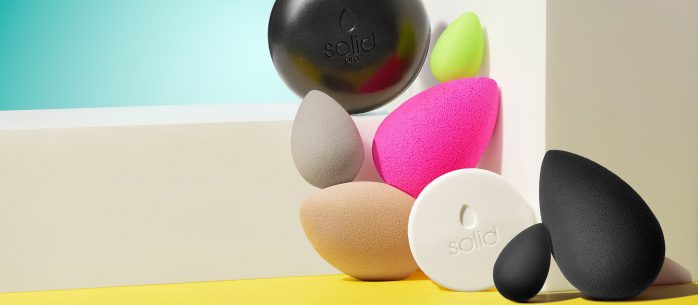 Beauty Blender
Beauty Blender According to experts, and we’re inclined to agree, the best way to apply foundation isn’t with a finger or a brush, but with a makeup sponge or beauty blender.
However, you have to make sure the sponge is slightly damp before using it.
Wet the sponge and then squeeze the excess water out, add the foundation straight to the sponge and dab it over your face.
This helps you more evenly apply the makeup to your skin. The pointy bits of the sponge are for the crevices around your nose and eyes, and the curved (or flat) part of the blender or sponge is used to blend it into your skin more generally.
Remember though, these sponges only last if you clean them properly – read our guide on how to clean your beauty blender.
“Always apply foundation before concealer,” Wendy Slattery, CEO and co-founder of The Beauty Buddy told mamabella. “This is so you can see the areas where concealer is needed and avoids using too much.”
FURTHER READING: The best makeup brushes and the best foundation brush
Use natural light and be sparing
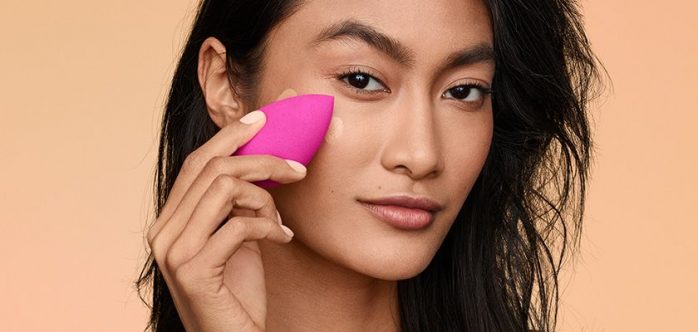 Pixfuel
Pixfuel “Natural lighting is always best when applying make up as the end result will be more accurate,” adds Slattery. “If applying at night, use a warm white light like LED, it’s the next best thing.”
The other key step is to use high quality brushes, she says, because the best makeup brushes take the effort out of application.
Slattery also told us that it’s important to be sparing with your makeup.
“Only apply setting powder where needed, in the oiler areas such as your T-Zone, under your eyes and around your nose” she said.
Also, if you haven’t perfected the eyeliner flick, try something else. “Don’t kill yourself trying to use liquid liner, use a nice chocolate brown eyeshadow and a soft angle brush to create a soft or dramatic winged eye look and use a damp cosmetic Q-tip to perfect your flick.”

Abigail is a leading science journalist writing about space, sustainability, technology and culture. She is author of The Art of Urban Astronomy, a must-have guide to the night sky that guides you through the seasons and learn about the brightest stars and constellations, the myths and legends of astronomy and how to identify star clusters and galaxies.

